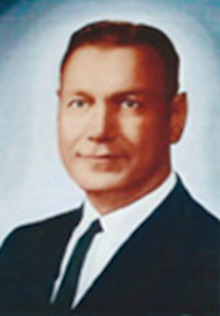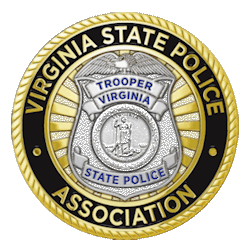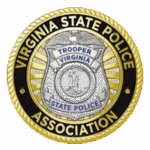Superintendent Charles Woodson, jr.

Charles Woodson, Jr.
Born December 22, 1907
Native of Rustburg, Virginia
Died August 22, 1983
Colonel Charles Woodson, Jr. graduated high School in Campbell County and attended the Virginia Polytechnic Institute 1925 – 1926 as an engineering major.
Following attendance at VPI, Woodson acquired several trucks and became involved in highway construction. Due to the depression and a related law that limited certain employment practices, he left road construction and moved to Charlotte, North Carolina where he entered the field of real estate with a family member.
Prior to 1932, he returned to Virginia settling in Nelson County where he became employed with Southern Mineral Production Corporation. He was selected to attend a police training school of the Division of Motor Vehicles at Virginia Beach in May, 1932. While this training was for the position of Inspector, at the time the position had come to be referred to unofficially as “Trooper’ according to archival material.
He graduated from the DMV training school July, 1932 and was officially employed with the agency at that time. During this period, candidates for employment with DMV were not officially hired until having successfully completed the training school.
Upon graduation from DMV training school in 1932, he was assigned to Keysville. He was promoted to Sergeant in 1938, supervising enforcement operations in the Mecklenburg, Nottoway, and Lunenburg County areas.
In 1938, Woodson was appointed Acting Lieutenant serving the Roanoke area. Promoted to Captain in 1939, he was first assigned to Wytheville and was then transferred to Richmond and appointed Executive Officer of the state police unit within DMV, forerunner of the Virginia State Police of later years.
In 1941 he was promoted to Major and appointed Superintendent of the state police unit of DMV, Richmond. In 1942, by action of the Virginia General Assembly, the state police unit of DMV was designated a separate department of government with the title Virginia Department of State Police. Commensurate with this action, Governor Colgate Darden appointed Woodson Superintendent of State Police with the rank of colonel.
Called to military service during World War II, Colonel Woodson served as a commissioned officer in the Navy from 1944 – 1945, returning as Superintendent of State Police following completion of his military obligations. During his career with the State Police, he completed specialized courses of study at the University of Oklahoma, University of Maryland, University of Virginia, University of Richmond, and Richmond Professional Institute (now Virginia Commonwealth University).
Woodson was a graduate of the FBI National Academy and member of the FBI National Academy Associates. He completed a course of study at the School of Legal Medicine, Harvard University and became a member of Harvard Association in Police Science.
After his appointment as Superintendent by Governor Darden in 1942, Woodson served in the position for twenty-six years and in that time was reappointed to the office by six other governors: Tuck in 1946, Battle in 1950, Stanley in 1954, Almond in 1958, Harrison in 1962, and Godwin in 1966. His total years of service stand as a remarkable testament to his abilities and underscore the value he had proven to be to each of these governors in shaping the state police into the much respected and admired organization that it became under his direction.
During his tenure as Superintendent, Colonel Woodson implemented a number of changes and improvements in the agency which created it as one of the leading and most respected State Police organizations in the nation. Under his leadership, a virtual culture of dedication to public service and professionalism was instilled which passed from generation to generation of state police members.
- He affected a merit system to aid in the promotion process.
- He broadened and strengthened the departments training programs.
- A “Trooper’s Pledge” was authored and approved in 1941 which is reduced to memory by each academy class and recited in unison at graduation. The pledge is expressive of an allegiance to duty and public service and a commitment to the Nation and Commonwealth of Virginia.
- Owing to the loss of male members of the department during World War II, women were employed as License Examiners to serve in the Women’s Auxiliary State Police (WASP).
- The first State Police Manual was produced in 1944 with a range of General Orders which have been the rule and guide of state police operations and administration for all members and employees through the present.
- The state police badge and patch emblem which were approved by Colonel Woodson remain in use at this time.
- The testing of the use of radar for speed enforcement began during his tenure.
- A Memorial Gallery of portraits of members killed in the line of duty was established to honor the service of each. Under Colonel R. L. Suthard, the Memorial Gallery was renamed the Charles W. Woodson Memorial Gallery to honor Colonel Woodson and his long period of service to Virginia.
- The use of aircraft in police work was introduced in 1946.
- Watson James of DMV was commissioned in 1947 to complete a history of the Department.
- The first vehicles in the Blue/Gray colors came into service in 1948.
- The Investigation and Records Division was established with Lieutenant R. B. King assigned to command.
- The use of trained dogs in police work was instituted.
- Teams of troopers trained in underwater work (SCUBA) were organized and placed into operation.
- He obtained funding and directed the construction of a new training academy, later adding an addition.
- During his tenure, new division headquarters and area offices across the state were constructed or upgraded.
- He approved creation of a department pistol team which participated successfully in competition with other agencies at the National level.
Woodson was past President of both the Virginia Association of Chiefs of Police and the International Association of Chiefs of Police. He was a trustee of the Institute of Police Management. He retired as Superintendent effective January 1968 and was succeeded by Colonel H. W. Burgess, Jr. Following retirement, he became a security consultant for Miller and Rhodes Department Store, Richmond. In 1970, he returned to state service when appointed Director of the newly established Virginia Law Enforcement Officer’s Commission, retiring from that position in 1973.
His wife Virginia died the year 2000; two daughters surviving, Elizabeth Woodson Brady, South Carolina and Virginia Woodson Rupp, Denver, Colorado. Colonel Woodson died August 22, 1983 and is interred in Westhampton Memorial Park, Richmond.

